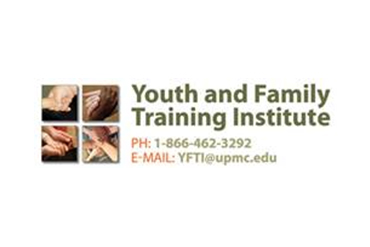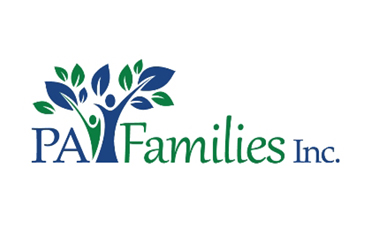Engaging Families in System of Care
Engaging Families in System of Care
Central to every SOC is the belief that families are best served when they have a primary decision-making role in the care of their children. In leadership positions, family members with lived experience become equal partners in the policies, procedures, and funding decisions that govern the care of all children in their community.
These family leaders—the ones you will want to engage in your SOC—have the unique knowledge of what it’s like to navigate complex systems on behalf of their child. With first-hand knowledge of what does—and doesn’t—work, they are essential voices that will not only speak on behalf of other families but help your system partners recognize opportunities for improving and integrating services.
That said, you and your system partners may first need to step back and check your assumptions about what constitutes “family.” It will also be helpful to review the different levels of engagement. This will not only help you identify excellent family representatives to serve on your CLMT; it will help every partner better serve and support families in the work you do together.
For our purposes, family can be defined as “a group of connected people bound by ties of affection and or obligation, most often biological or legal kin, but often including other significant people as determined by the individual, and those people may change over time.” Families are fluid. Family responsibilities (such as employment, caretaking, or systems involvement) mean that they may not have the time, resources, or energy to always be fully engaged. Additionally, family members are under significant stress. Self-worth can be diminished as family members become unsure of their value, and this may also impact engagement.
Different levels of family involvement, inclusion, and engagement each require trust. Consider the distinctions between these levels to better understand how families and systems might interact:
Family Involvement – Family participation in systems, services, and community activities are either by request or required by an agency or provider. Agency/Provider Staff is primarily responsible for the scheduling of appointments or events. There may be a small number of selected family members invited to participate in leadership opportunities, and family voice and choice are usually not an integral part of this process. Examples of involvement include:
- Focus on the number of family attending event or meeting
- Provide family with resource material and the tracking number of materials distributed
- The organization or provider identifies projects, needs, or goals; families are then given options on how they can contribute
- Goals are created by system or funding requirements with minimal family input on how to reach the goals
Family Inclusion – Inclusion is the active and meaningful integration of family members and support persons into the lives of their loved one's resilience and recovery process that is family-centered, culturally responsive, and a strength-based approach to their quality of life and their family. When "included," families will experience the following:
- Understand the complexities and benefits of being included as part of the implementation of the care and treatment plans
- Understand the role of direct care workers, administrators, and policymakers
- Understand our own family relationships and how they impact our ability to work with systems, providers, and the individuals in care
- Regulations and policies governing mental health care include the rights of families to be involved. Inclusion encourages families to participate in the care and treatment of the individual
- Families are Included in setting goals; developing case plans. Decisions are made jointly to ensure their children's safety, permanency, and well-being.
Family Engagement – Engagement is an equitable partnership between families and staff. There is shared responsibility across administration, staff, and families that is strength-based, culturally responsive, and embedded in all work. Family and staff work mutually together to accomplish change that is in the best interest of the child, youth, individual, and family. Family engagement is characterized by the following:
- Goals are created with or by families, based upon what families think, dream, or have concerns about
- Families and staff reflect the diversity of the community (race, ethnicity, language, education level, and geography.
- Partnerships with established and maintained with family-led and community-based organizations
- Access to relevant knowledge is provided
- Transparency and partnership exists in all parts of the process
- There is an evaluation of changes and what the system or organization is doing differently as a result of engaging families with lived experience
- Engagement is a core value
- Established engagement at all levels, from the individual family level to families in leadership and advisory roles
- The goal of family engagement is to gain partners, not to "serve clients."
These distinctions can help system partners recognize powerful opportunities for change—opportunities that increase when families are genuinely engaged. And, by witnessing the competence and confidence of family members, system partners will increasingly recognize them as critical contributors in all decision-making. We urge you to make a commitment to engaging families fully—a decision that will also help you attract strong representation to your CLMT.
Once you’ve identified potential family leaders, use your knowledge around family involvement, inclusion, and engagement to welcome this equal and valued voice to your table. Make participation easier and let them know you will provide whatever support and training they need to develop their voice and leadership skills to serve effectively. Commit to ensuring that meetings are at a time and place that make participation easy.
Effective Partnership with Family Leaders in SOC
Here are some ways that SOC counties can both support and tap into the wisdom of their family leaders:
- Provide meaningful training and technical assistance to family members, counties, and providers, such as:
- Training in family involvement, roles and responsibilities, communication skills, and meeting facilitation.
- Certification as a Family Peer Support Service Specialist. These are caregivers with lived experience supporting a family member with behavioral, emotional, mental health, or co-occurring challenges. They provide peer support, information, and guidance in navigating related systems, and these specialists can be called upon to help with crisis response, inpatient treatment, PRTF, support groups, and in a home setting.
- Training in the Family Road Map (from The Road Map© Series) to build confident, effective managers of today’s big crisis and tomorrow’s long haul through complicated life situations.
- Encourage family leaders to develop family networks.
- Through your system partners, provide financial and/or emotional support to family members of your CLMT as a way of honoring and valuing their contribution.
- Provide opportunities for family leaders to present information and trainings, serve as committee chairs, assist in interviewing new hires for related agencies, and help plan events and trainings.
Best Practices for a Family-driven SOC:
- Leadership Teams ensure that family members are prepared, trained, supported, and valued.
- Mechanisms are in place to assist family participation in events such as consultation compensation (stipends), transportation, travel reimbursement, and childcare.
- Families have multiple opportunities to provide leadership, advocacy, and support on behalf of other youth and families across the county.
- Families and systems have a shared responsibility to ensure informed decision-making.
- Families have a primary decision-making role in the county regarding their youth’s and family’s care and overall wellbeing.
- Families are encouraged and supported to find and/or develop family organizations at the local or state level to support family involvement at the system and service-delivery levels.
Additional resources to support family leaders and families in your county can be found in Appendix H of the System of Care Implementation Toolkit.
PA CRISIS TEXT LINE







